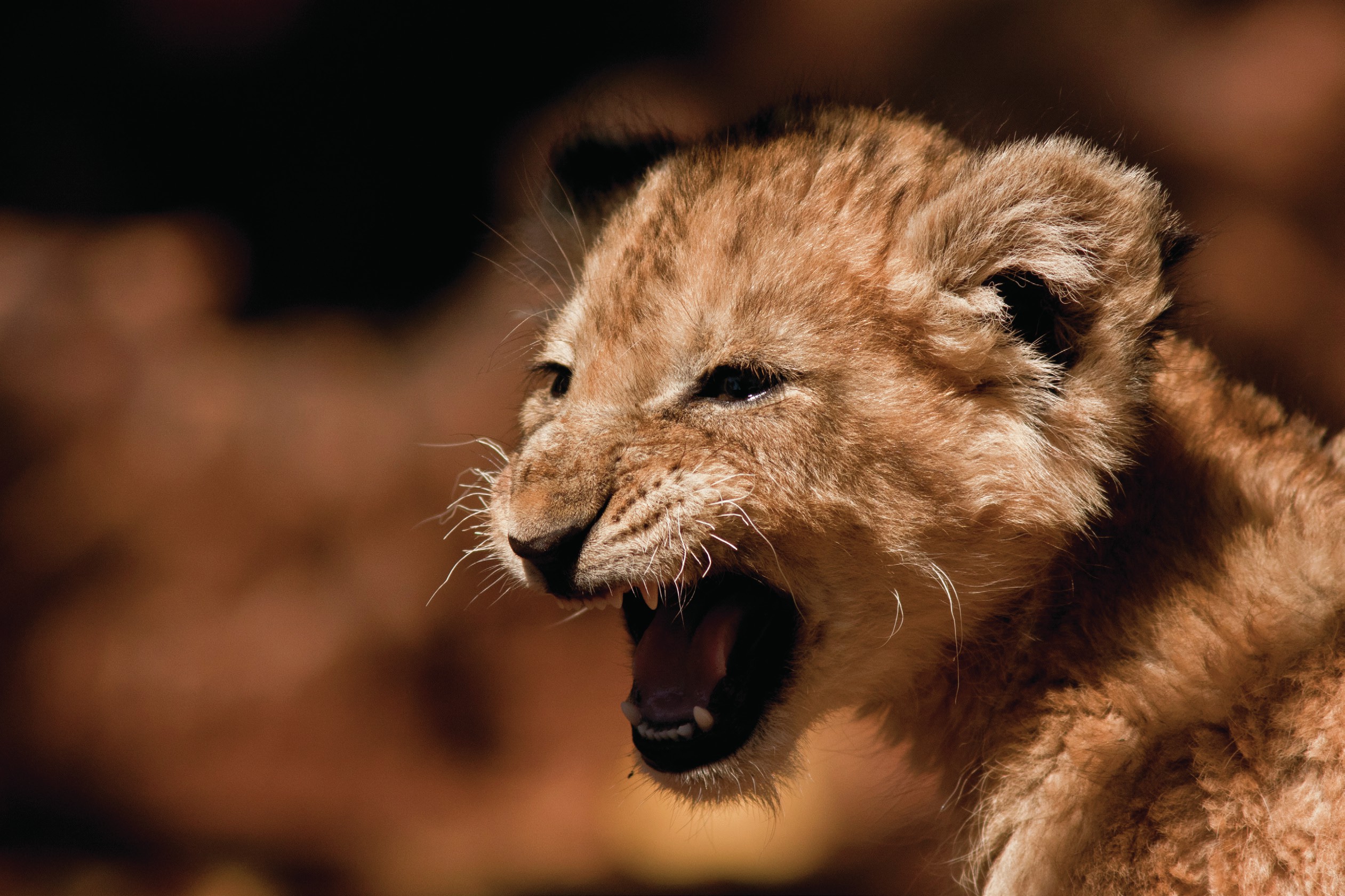
Lions (Panthera leo) are unique among the big cats in that they live in social groups called prides. Prides are family units that may include up to three males, a dozen females and their young. Only male lions boast an impressive mane, but despite their fearsome appearance, it is the females that are the pride’s primary hunters. They work together to bring down large game such as antelope, zebra and wildebeest. Females are more numerous than males and mating occurs only within the pride. The pride system seems to have evolved because the savannah where lions live is patchy and variable. Prey tend to congregate near water sources — by banding together, lions can increase their ability to hold territory in such valuable areas against competitors. It also helps protect cubs (such as the one shown here) against attack by male lions from outside the pride.
When most people think of Africa and its wildlife, lions are the first thing on their minds. Lions once roamed most of Africa and parts of Asia and Europe. Today, however, they are restricted to parts of sub-Saharan Africa, with one small population in the Gir Forest in India. Recent estimates put Africa’s wild lion population at between 20 000 and 30 000 individuals — down from around 50 000 a decade ago. The numbers are declining at a rate of around 5–8% each year (http://tinyurl.com/curb3a3). If nothing is done, it could take only 10 years for Africa’s lions to become extinct in the wild — a shockingly short time for Africa’s biggest and bestloved big cat.
Your organisation does not have access to this article.
Sign up today to give your students the edge they need to achieve their best grades with subject expertise
Subscribe




